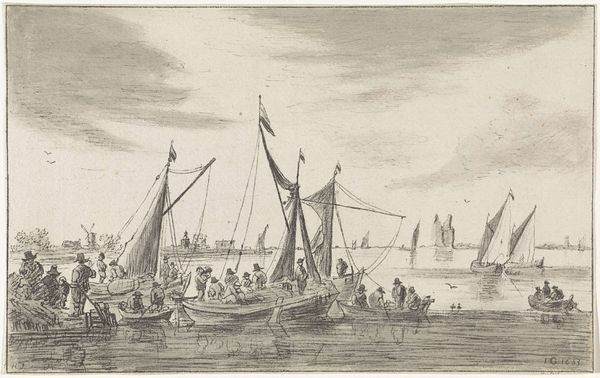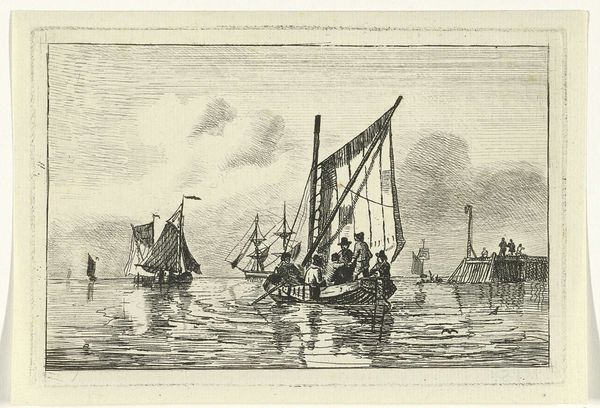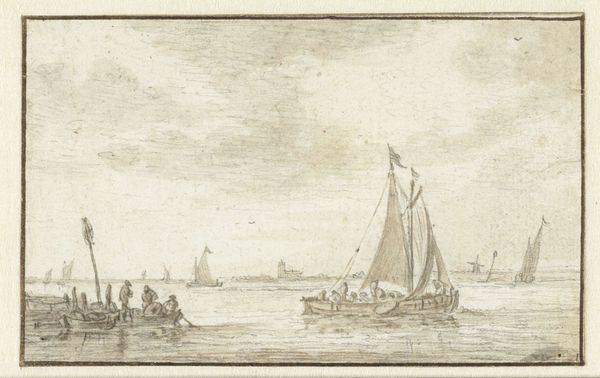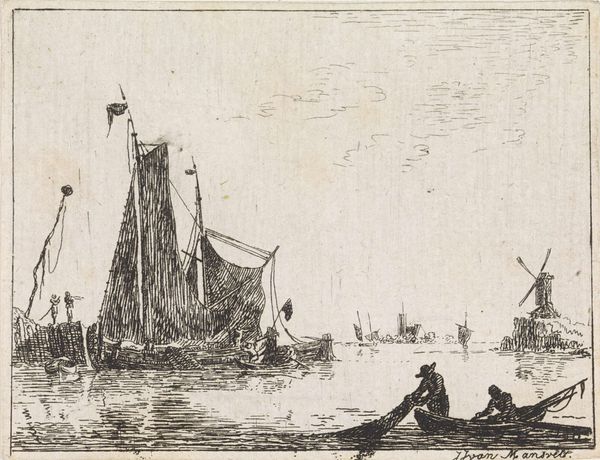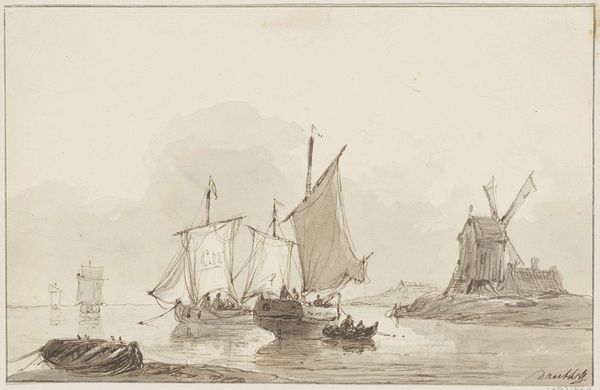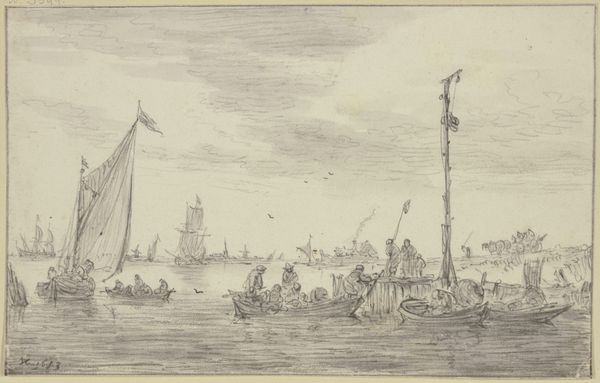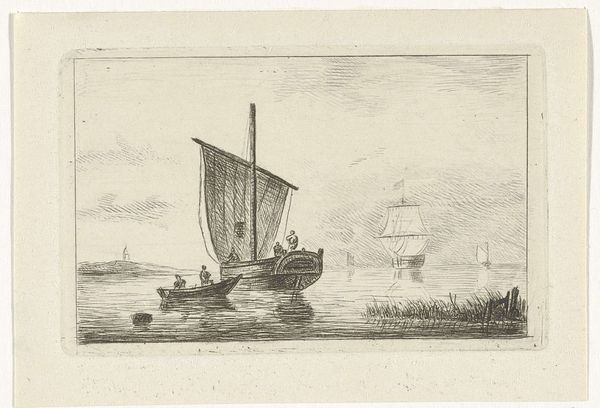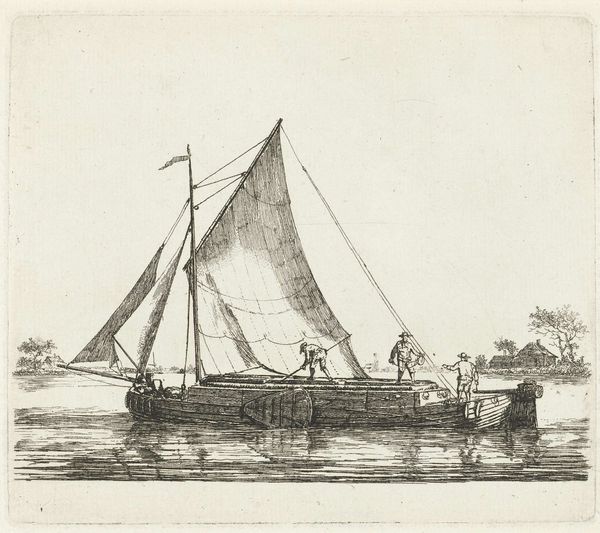
drawing, print, etching, ink
#
drawing
#
blue ink drawing
# print
#
etching
#
landscape
#
ink
#
genre-painting
#
realism
Dimensions: height 98 mm, width 147 mm
Copyright: Rijks Museum: Open Domain
Curator: Looking at Willem Gruyter Jr.'s etching from 1844, titled "Vier mannen in sloep", I’m struck by how the delicate lines capture such a sense of tranquility. What’s your initial take? Editor: My eye is drawn to the reflections. They lend the scene an uncanny symmetry and peace, almost meditative, as if holding still that particular slice of the Netherlands’ landscape. The formal structure here definitely enhances that mood. Curator: Absolutely, and beyond the aesthetic appeal, consider what Gruyter might be conveying about Dutch life. Etchings like this were quite popular as affordable art for middle-class homes, shaping perceptions and reinforcing values about labor, leisure and nationhood. Editor: Indeed. If we closely consider the linear work here, particularly in the rendition of the sails and the men's clothing, we might note how it constructs the values of a time and the social roles that go along with that era’s production processes. The artist's skill shapes a particular vision. Curator: I agree; it’s fascinating to see how prints like these functioned in material culture, shaping a sense of shared identity, perhaps even nostalgia. Editor: From a structural perspective, the piece also achieves harmony. Consider the way the artist created an echo through composition: dark and light, still and active – all creating a sense of the sea and shore reflecting aspects of society itself. Curator: That harmony really invites us to ponder. Are we witnessing an innocent scene, or does it subtly comment on the social and economic tides of the time, suggesting perhaps tensions beneath the surface of a nation reliant on maritime activities? Editor: We can look at it through an ideological framework of representation. It raises questions about authenticity. Do we perceive realism or rather the fabrication of images within societal power structures? Curator: It reminds us of how essential it is to examine artistic statements and their cultural contexts together to more clearly read them. Editor: Yes, thank you. I’ve appreciated our fresh viewing of the image today, and all that these small pieces contain. Curator: Me too. It underlines how material choices can tell significant stories when decoded by social art history's investigative toolkit.
Comments
No comments
Be the first to comment and join the conversation on the ultimate creative platform.
